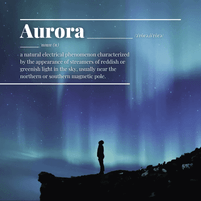On May 10, 2024, the skies were ablaze with one of the most powerful solar storms recorded in recent history. This celestial event not only provided a breathtaking visual spectacle but also captured the attention of astronomers, photographers, and sky-watchers around the world. In this article, we explore the details of this solar storm, its impacts, and how it created such a stunning display across the globe.
What is a Solar Storm?
A solar storm, also known as a geomagnetic storm, occurs when a burst of solar wind and magnetic fields rising above the solar corona or solar flares interact with the Earth's magnetic field. This interaction can cause an array of effects on Earth, including disruptions in communication satellites and power grids, as well as the more visually captivating phenomena such as auroras or Northern Lights.
The Event of May 10, 2024
The solar storm of May 10, 2024, was the result of a particularly intense solar flare, a rapid and substantial eruption of energy on the sun's surface. This flare released a large cloud of particles into space, which eventually collided with the Earth's magnetic field. The energy from the collision excited the atmospheric particles, resulting in extraordinary light displays, primarily near the polar regions.
Observations and Impact
The auroras generated by this storm were visible much further from the poles than is typical, delighting observers in regions that rarely experience these lights. Major cities in the northern United States and Europe reported sightings of the aurora, with social media buzzing with stunning images and videos from awestruck viewers.
Scientific and Practical Implications
While the visual spectacle is undoubtedly a delight for observers, solar storms of this magnitude have serious implications for technology and infrastructure. The 2024 storm temporarily disrupted radio communications and GPS signals, posing challenges for navigation and communication industries. Scientists are studying this event closely to better understand the interactions between solar emissions and Earth's magnetic field, with the goal of improving predictions and mitigating future disruptions.
Safety and Preparedness
Events like the May 10 solar storm highlight the need for preparedness in an increasingly technology-dependent world. Governments and organizations are urged to enhance the robustness of critical infrastructure to withstand such geomagnetic disturbances.
Conclusion
The solar storm of May 10, 2024, was a reminder of the dynamic and sometimes unpredictable nature of our solar system. It provided a unique opportunity for scientific study and public engagement with space weather phenomena. As we continue to explore and understand these powerful events, the awe-inspiring beauty of the auroras serves as a spectacular intersection of science and natural wonder, reminding us of our place within the broader cosmos.
FAQs About Solar Storms
Q: Can solar storms be predicted? A: Yes, solar storms can be predicted to some extent. Scientists use observations of the sun, including the monitoring of sunspots and solar flares, to forecast when a solar storm might occur.
Q: How often do solar storms occur? A: Minor solar storms are relatively common, but major storms like the one on May 10, 2024, are much less frequent. The sun goes through approximately 11-year cycles, with varying activity levels.
Q: What can I do to observe a solar storm safely? A: To safely observe a solar storm-induced aurora, find a dark place away from city lights and look towards the sky. No special equipment is needed to enjoy the auroras, but a simple camera with long exposure settings can help capture spectacular images of the event.


